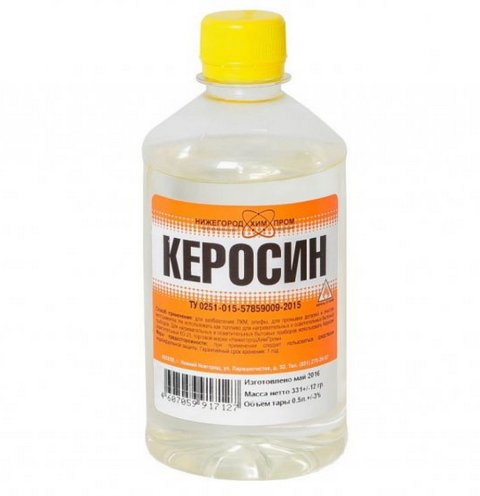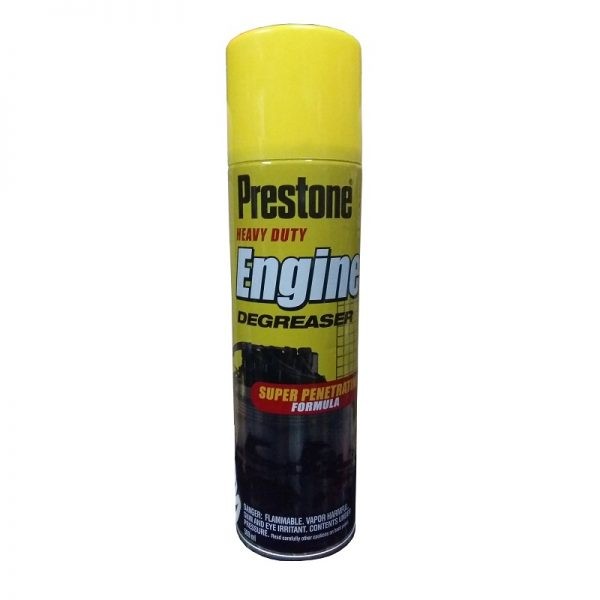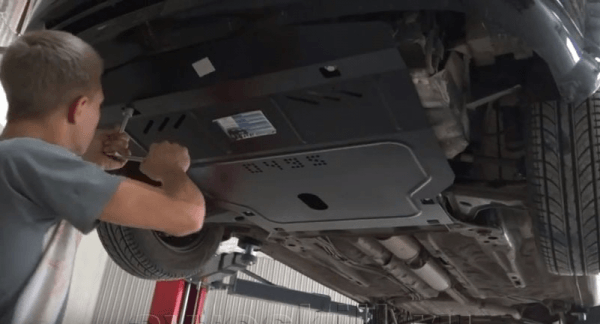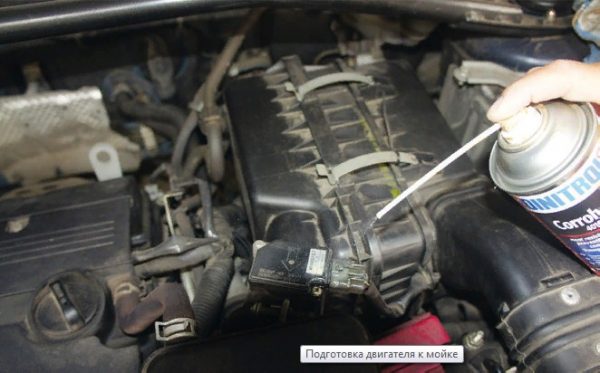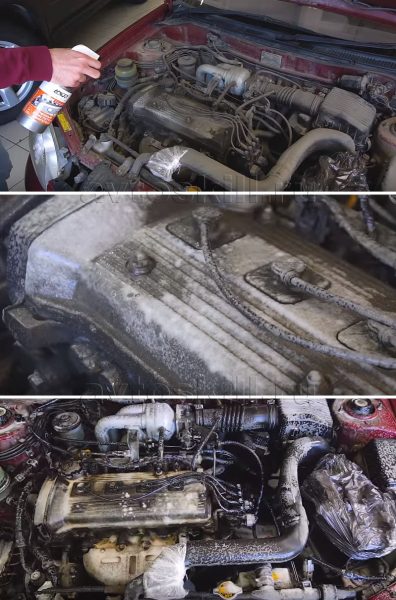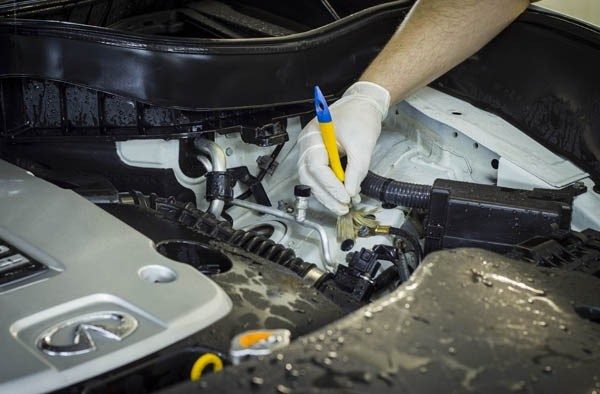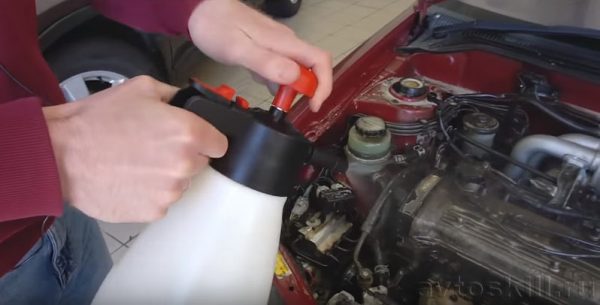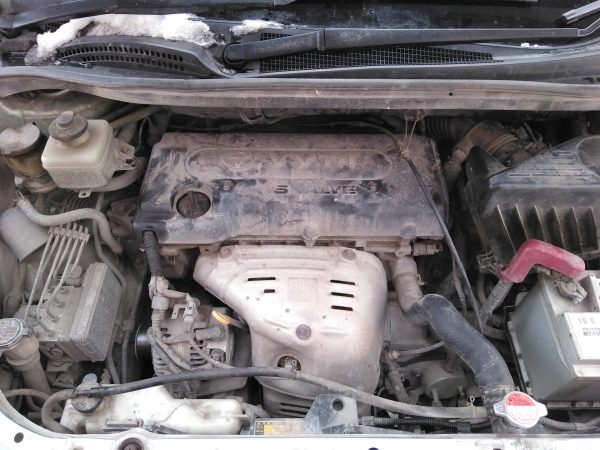
Why wash a car engine: we consider the procedure from all sides
Content
During the operation of the car, owners most often wash only the body and less often the interior. However, the engine also needs to be kept clean, since a long-term layer of dust and oil negatively affects heat transfer, fuel consumption and, in general, the operation of the motor. Therefore, washing the engine is a necessary procedure, which must be done correctly in order to avoid trouble.
Is it necessary and is it possible to wash the car engine
When operating a car, owners often think about washing the power unit, because over time it becomes covered with dust, oil sometimes gets on it, as a result of which the appearance of the unit becomes not very attractive. Since washing the engine is a responsible process, all the nuances should be considered in more detail.
Why wash
Despite the fact that there are many supporters and opponents of washing the motor, it is necessary to highlight the following negative points that arise due to the contamination of the unit:
- deterioration in heat transfer. Due to the thick layer of dirt and dust, the engine case is cooled worse by the cooling fan;
- power reduction. Due to poor heat transfer, motor power is reduced;
- increase in fuel consumption. A decrease in power is inextricably linked with an increase in fuel consumption. In addition, the service life of many engine elements is reduced;
- increased fire risk. The accumulation of dirt on the outer surface of the power unit can cause spontaneous combustion, as dust and oil settle on the surface of the unit, which heats up during operation.
These problems indicate the need for periodic washing of the node.

Frequency of the procedure
An engine wash is recommended in the following situations:
- in case of severe contamination of the unit due to failure of lip seals, nozzles, etc.;
- in order to determine worn seals, as well as leakage of technical fluids;
- before overhaul of the power unit;
- when preparing the vehicle for sale.
From the above points, it can be understood that the engine is washed only as a last resort. There is no specific frequency: it all depends on the operating conditions of the vehicle and its features.

How to properly wash a car engine
If it became necessary to clean the motor from contamination, you first need to find out what means should be used for these purposes and in what sequence to perform the procedure.
What can be washed
To wash the unit, it is necessary to choose the right product, since some substances can damage the elements of the engine compartment or simply will not give any result. It is not recommended to wash the motor with the following substances, as they are ineffective or dangerous:
- dishwashing detergents. Such substances are unable to clean oil deposits on the engine, so their use is meaningless;
- combustible substances (solar oil, gasoline, etc.). Although many motorists use these products to clean the power unit, it is worth considering the high probability of their ignition;
 Combustible substances for cleaning the motor are not recommended due to the high probability of ignition
Combustible substances for cleaning the motor are not recommended due to the high probability of ignition - water. Ordinary water can only remove the top layer of dust on the motor, but nothing more. Therefore, its use is ineffective.
Today, the engine can be cleaned with two types of detergents:
- specialized;
- universal.
The former are used in car washes, depending on the type of pollution, for example, to remove oil deposits. Universal means are intended for cleaning of any kinds of dirt. To date, the choice of substances under consideration is quite diverse. Means are classified according to the type of container (spray, manual sprayer). Depending on the size of the engine compartment, the choice is given to one or another cleaner. Among the most popular detergents are:
- Prestone Heavy Duty. Universal cleaner, which is available in a 360 ml aerosol can. The product removes various contaminants well, but is not suitable for perennial dirt. Mainly used for prevention;
 Prestone Heavy Duty cleaner is most suitable for preventive engine washing
Prestone Heavy Duty cleaner is most suitable for preventive engine washing - STP. Refers to universal cleaners. Also has the form of a balloon in an aerosol with a volume of 500 ml. It is an effective tool for removing any engine contaminants. It is recommended to apply the substance to a heated power unit and rinse after 10-15 minutes with clean water;
- Liqui Moly. This cleaner is widely used not only in car washes, but also in garage conditions. The product is available in the form of a spray with a volume of 400 ml. Great for removing oily contaminants and dust;
 Liqui Moly cleaner copes with various contaminants perfectly
Liqui Moly cleaner copes with various contaminants perfectly - Laurel. It is also a universal detergent, which is available in the form of a concentrate and needs to be diluted. Differs in high efficiency of cleaning of the engine, and also protects units from corrosion.
 Engine cleaner Lavr is available as a concentrate and needs to be diluted
Engine cleaner Lavr is available as a concentrate and needs to be diluted
How to wash the engine with your own hands
Manual engine washing is not an easy procedure, but it is the safest and most reliable. To work, you will need the following tools and materials:
- a set of brushes and brushes of different sizes;
- latex gloves;
- cleaner;
- water.
Before you start washing the engine, you must read the instructions for the detergent.
Preparatory work
So that after cleaning the motor there are no troubles (problems with starting, unstable operation, etc.), the unit must first be prepared by following simple recommendations:
- We warm up the engine to + 45–55 ° C.
- We remove the terminals from the battery and remove the battery from the car.
- We isolate the air intakes and all sensors that can be reached with tape and polyethylene. We especially carefully protect the generator and starter.
 Before washing, all sensors and electrical connections are insulated
Before washing, all sensors and electrical connections are insulated - We unscrew the mount and remove the protection of the engine compartment.
 Unscrew the mount and remove the engine protection
Unscrew the mount and remove the engine protection - We process contacts and connectors with a special aerosol that repels water.
 Contacts are protected with a special water-repellent agent
Contacts are protected with a special water-repellent agent - We dismantle all unnecessary elements (plastic covers, protections, etc.). This will provide maximum access to the motor from all sides.
When preparing the engine for washing, in no case should you unscrew the spark plugs so that water does not get into the cylinders.
Step-by-step process
After the preparatory measures, you can start washing the power unit:
- We spray the cleaner evenly over the entire surface of the motor, trying to get as little as possible on the protected elements, after which we wait for a while. Most of the products during processing form a foam that dissolves the oil coating.
 The cleaner is applied evenly over the entire surface of the motor
The cleaner is applied evenly over the entire surface of the motor - We put on gloves and, armed with a brush (the hairs must be non-metallic), wash the dirt from every corner of the engine compartment and the motor itself. If there are areas where the pollution has not gone well, we wait a few more minutes.
 Brushes and brushes remove dirt in every corner of the engine compartment
Brushes and brushes remove dirt in every corner of the engine compartment - Putting a hose on a water tap, wash off the dirt with a weak pressure of water.
 Rinse the cleaner off the engine with tap water or a spray bottle.
Rinse the cleaner off the engine with tap water or a spray bottle. - We leave the hood open for a day or blow the engine compartment with compressed air using a compressor.
To dry the engine compartment, you can leave the car with the hood open for several hours in the sun.
Video: do-it-yourself engine wash
How to wash at a car wash
If you don’t want to wash the engine yourself, or if you are afraid to do this procedure incorrectly, you can contact a car wash. In such services, the engine is cleaned in the following order:
- They protect the battery, generator, sensors and other electrical appliances from moisture with the help of dense polyethylene.
- Apply a special agent and wait 20 minutes until the reaction with pollution begins.

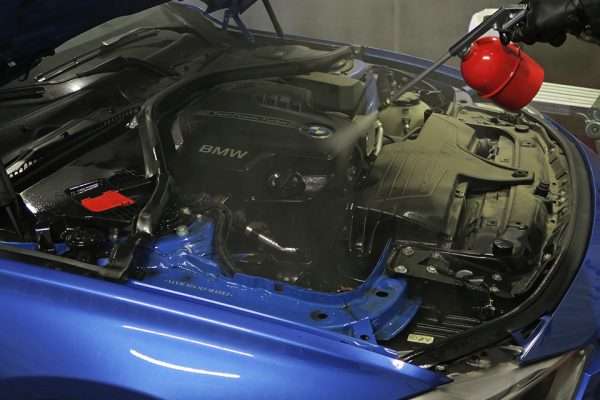 The contaminant cleaner is applied to the motor and to all hard-to-reach places
The contaminant cleaner is applied to the motor and to all hard-to-reach places - Remove the substance with a spray bottle.
- Dry the motor with an air compressor.

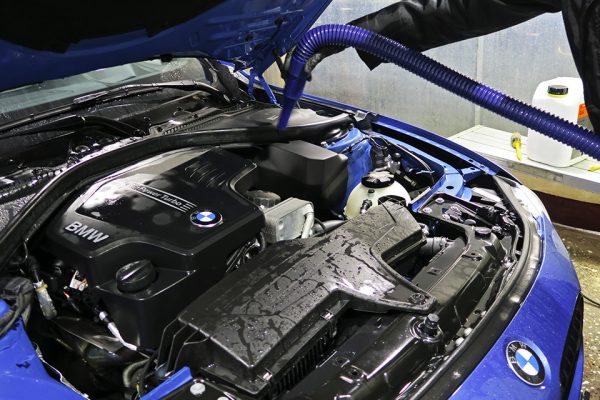 The engine is dried with a compressor or turbo dryer
The engine is dried with a compressor or turbo dryer - Start and warm up the unit to remove residual moisture.
- A special preservative is applied to the surface of the motor to form a protective film.
Karcher washing
The engine compartment of each car has a certain protection of electrical equipment from moisture. In everyday use, if moisture gets on the nodes, then in small quantities. The use of a high pressure washer (Karcher) can damage the electrical equipment of the power unit. A jet of water under pressure hits almost any corner of the engine compartment. As a result, water can get on the contacts of electrical devices, sensors, etc. A particular danger is the penetration of moisture into the electronic control unit, as a result of which it may fail.
It is possible to wash the motor with Karcher only if the following recommendations are observed:
- important electronic components are isolated from moisture;
- water from a pressure washer is supplied only from a distance. The proximity of the nozzle to electrical appliances can lead to a violation of the seals and wiring connections;
- after cleaning, the motor is blown with compressed air and warmed up for 20 minutes.
Video: how to wash the motor with a Karcher


Watch this video on YouTube
Engine problems after car wash
Sometimes, after washing, various problems arise in the operation of the power plant, which are expressed as follows:
- the engine does not start or troit;
- the motor is unstable (idling floats, twitches are present);
- the oil pressure light comes on;
- lit "check".
If, after washing the assembly, all electrical connections are restored, the starter turns and the fuel pump runs, but the engine does not start, then attention should be paid to the following:
- on cars equipped with an ignition distributor, you need to get rid of the water under the cover of the distributor by wiping or blowing. They also dry high-voltage wires, turn out and inspect spark plugs, remove moisture from candle wells;
- on machines in which ignition coils are installed separately for each cylinder, each part must be dismantled and dried separately. For the rest, perform actions similar to the previous paragraph;
- when the engine troit (one of the cylinders does not work), a drop in power is felt, and the operation of the unit is accompanied by strong vibration. In addition, twitching of the car itself is possible. The most common reasons for this behavior are possible due to problems with the ignition system, discussed in the first paragraph. If drying did not help, the reasons may be due to malfunctions of one of the motor sensors;
- if the speed floats, then this indicates problems with the throttle or its position sensor. In this case, cleaning and drying of the elements is required, as well as disconnecting the battery terminals for 10-15 minutes;
- the oil pressure light on the instrument panel may light up due to the ingress of moisture on the oil sensor itself or its contacts;
- indication "check" indicates a malfunction of the motor. It is possible to determine the malfunction only after diagnosing the node by reading errors from the computer in a service center.


Sometimes problems that arose after washing the engine go away on their own as a result of the complete drying of the unit.
Reviews of motorists about washing the engine
A couple of days ago I washed the engine, did not disconnect anything, closed the generator with cellophane, shook it a bit with tape, sprayed all the oily dirty places with engine cleaner, but there are not very many of them ... the cleaner that does not work on paint, our Soviet one, waited a couple of minutes until it acidified, gasped from the sink for 3-4 minutes and you're done. It is convenient to wash with a sink, you can more or less control where the jet hits and wash exactly where you need it. After leaving the hood open, everything fled and dried up after 20 minutes and that's it. Everything shines, beauty. Started up without problems.
I wash like this: I plug or cover with rags those places where it is undesirable to get water and engine cleaners (electrician, battery, air filter), I only water very dirty places from the cylinder. These are usually oil stains (the rest will be washed off with water) and I wash it off under pressure from the sink.
I used to wash it with aviation kerosene, it turned out great, but then I didn’t like the smell and weathered for a long time. In the end, like everyone switched to Karcher. I cover the generator, immediately water it with a contactless sink, wait 5 minutes and then wash everything off. Then I’ll start it, dry it and appreciate it - under the hood everything is as good as new, clean.
My regular karcher. With a small pressure, at first I douse everything, then with a little foam, then I wash it off with Karcher, again with a small pressure, without much fanaticism, because I wash it regularly. Terminals, generator, brains, etc., do not protect anything at the same time.
The car engine can be washed both in a car wash and with your own hands, but only as needed. Since not every service is ready to take responsibility for the performance of the motor after the procedure, self-washing is a more preferable option. Having familiarized yourself with the means that can be used to clean pollution and with step-by-step actions, it will not be difficult to wash the engine of your car.


